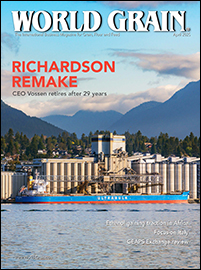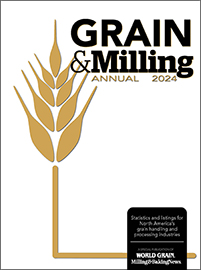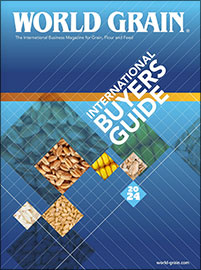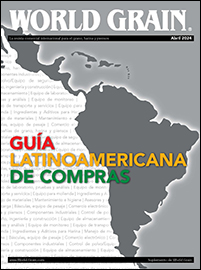ROME, ITALY — Major food commodity prices fell in November, reversing about half their rise in the previous month, as the cost of internationally-traded staples, except for sugar, fell across the board, the United Nation’s Food and Agriculture Organization (FAO) said on Dec. 3.
The FAO’s Food Price Index averaged 156.7 points in November, down 1.6% from its revised October average, and 18% below its value a year earlier.
The FAO Cereal Price Index fell 2.3%, with coarse grain prices falling even more due to favorable harvests in the United States, the world's largest maize producer and exporter.
Vegetable oil prices fell 3.1% from October, aided by lower energy prices, and encouraging planting and production prospects for soy crops in South and North America.
The FAO Food Price Index is a trade-weighted index tracking international market prices for five major food commodity groups.
FAO's Cereal Supply and Demand Brief, released on Dec. 3, slightly trimmed its forecast for world cereal production in 2015, which is now 2,527,000,000 tonnes, or 1.3% below the previous year's record. A lower forecast for maize production in China was the main reason for this month's downward revision.
Global cereal utilization is projected to grow by 1% in 2015-16, slower than in previous years, partly due to lower oil prices curbing industrial demand for biofuel crops. At 2,529,000,000 tonnes, demand will only require a modest drawdown from the world's currently large reserves.
As a result, the upcoming marketing season should be "generally comfortable," and world inventories by the close of season in 2016 will only be slightly below their record opening levels.
However, abnormal weather patterns associated with El Niño are expected to adversely impact cereal production in parts of Africa, Asia and Oceania, while several countries in Central America and the Caribbean, as well as in Asia, have already been affected. Dry weather in northern India also cut local cereal production in the 2015 season.
Some 33 countries, including 26 in Africa, are in need of external assistance for food, due to drought, flooding and the needs of persons displaced by civil conflicts, according to FAO's new Crop Prospects and Food Situation.
Food insecurity has worsened due to conflict, notably in Syria and Yemen, but also in countries such as Niger, Cameroon, Chad and the Democratic Republic of Congo that have taken in refugees from neighboring countries.
The number of people in West Africa in a Phase 3 Crisis or above classification is forecast to rise from around 8,000,000 people currently to more than 10,700,000 between June and August 2016.
In East Africa, marked by a severe drought in Ethiopia as well as protracted conflicts, the number of people in need of humanitarian assistance is estimated at 17,000,000, 50% higher than a year ago.
The Southern Africa sub-region is also facing some strains as early seasonal dryness linked to El Niño is impacting cropping activities for 2016 cereal crops.
FAO now expects the 2015 regional output of coarse grains in Africa to drop by 12% to 67,000,000 tonnes. Global coarse grain production for the year is projected to decline by 2% to 1,300,000,000 tonnes.





